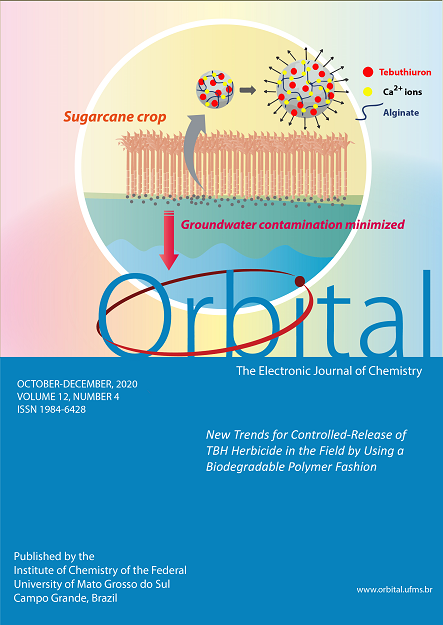Development of a Methodology for Determining Major Ions in Samples of Atmospheric Particulate Matter by Ion Chromatography
- ion chromatography,
- environmental samples,
- major water-soluble ions,
- particulate matter
Copyright (c) 2020 Orbital: The Electronic Journal of Chemistry

This work is licensed under a Creative Commons Attribution-NonCommercial-NoDerivatives 4.0 International License.
Abstract
Countless deleterious effects on human health and the environment are promoted by the action of air pollutants. Thus, it is necessary the development of analytical methods to identify and quantify efficiently ions present in atmospheric particulate matter. This study proposes a new analytical methodology for simultaneous quantification of 12 organic ions (Lactate, Acetate, Propionate, Formate, Butyrate, Methanesulfonate, Pyruvate, Monochloroacetate, Trifluoroacetate, Succinate, Oxalate and Citrate), 12 inorganic anions (fluoride, bromate, chloride, nitrite, bromide, nitrate, sulfite, sulfate, tungstade, molybdate, phosphate and chromate) and 7 cations (lithium, sodium, ammonium, potassium, magnesium, calcium and strontium) using ion chromatography coupled to conductivity detection. The optimization of the proposed method was performed univariate and validation was done according to IUPAC recommendations; LOD and LOQ varied between 12 to 114 pg m-3 and 35 to 342 pg m-3 respectively, showing recovery values between 89% to 109% and R2 between 0.9979 and 0.9999 for the 31 main ions studied. Ions were successfully determined in environmental samples of particulate material in the 10 µm and 2.5 µm fractions. This method was considered a comprehensive, accurate, fast and robust procedure for the study of ions in samples of atmospheric particulate matter.

